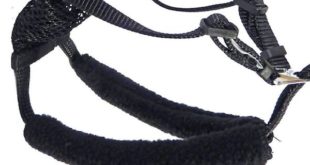Dog collars talk a lot about fashion! Dog collars are worn by puppies to serve the purpose of exercising, identification, and walking. The best collar on the right canine can make a strong statement of style and choose wisely for the dog. Have a look at these various collar types and choose one suits your dog the very best.
1 . Head Collars: Mind collars or halters look like muzzles albeit with a diverse purpose. These halters take action more like harnesses for the crown and are intended to help teach a dog to walk over a leash and heel. In case the dog pulls on the leash the halter will cause the top to turn and leaves your dog feeling a bit unnatural and therefore deter the behaviour. These types of collars help discourage tugging. Head halters should not be kept on unattended dog or perhaps dogs on a very long prospect.
2 . Break-Away Collars: Useful for daily use these training collars have a special feature that may prevent choking. They can be used on a leash intended for walking. If the leash gets caught on something the particular collar breaks away. Nevertheless be sure that your dog’s label is on the collar together with your contact details. If the leash is usually hooked on to both streets then the dog can be wandered without the risk of collar fractures.
3. Daily Collars: A person’s personal style can be indicated with a variety of everyday collars for dogs. Collars with metal buckles or quick release clasps are available in a variety of materials, colorings and styles. Many people prefer belt collars for stronger pups, as the quick release clasps are generally less sturdy. Explained leather collars are sturdy and less likely to cause baldness or parting.
4. Chain-Slip Collars: Also called as choke chains these are generally reserved for teaching only. Use chain-slip dog collars with caution and never let it stay on your dog unattended. While walking the dog on a leash and these collars, a quick whip on the leash will cause some sort of closing effect on the dog’s neck thus restraining your canine.
5. Metal-Prong Collars: Successful for strong, stubborn pets with a tendency to pull at the leash, these training collars do look ungainly. Also, they are known as pinch collars and they are very useful during training. Utilize with caution and never get away from on a dog unattended.
six. Martingale Collars: Also known as Greyhound collars or limited fall collars, they help prevent canines from slipping out of the collars for dogs while on a leash. A small tug will tighten typically the collar without complete drawing a line under of the neck. Made of Nylon material and similar materials they are presented in several bright colors and therefore are particularly useful on sighthounds though they can be used for one of the other breeds.
7. Straps: These are designed to place on the dog’s chest and belly crossing over on the back again. A leash can be connected on top of the harness. They are more suitable for dogs which have a tendency to pull as they usually do not cause pressure over the the neck and throat. These are basically ideal for puppies with medical problems from the neck and airway.
eight. Dog-Show collars: The Martingale leads are a particularly helpful dog show collar. There is a collar portion that moves over the head and tightens when the leash is drawn.
 Take the dogs Out #1 Authority Sites for Dogs
Take the dogs Out #1 Authority Sites for Dogs

